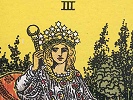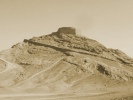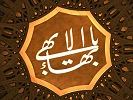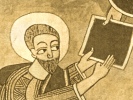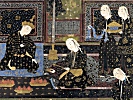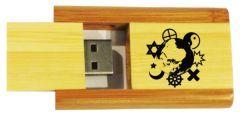
Help!
Keep the Archive Alive!
Sources of Lord of the Rings

J.R.R. Tolkiens’ Middle Earth did not come out of thin air. Tolkien, an academic linguist, drew on the following source materials to inspire his world-building exercise. The texts presented at this site are complete and in some cases in the original languages.
![]() The Kalevala. [English]
The Kalevala. [English]
![]() The Kalevala. [Finnish]
The Kalevala. [Finnish]
This Finnish saga, replete with battling wizards and heroes, quests and magical objects has been cited as one of the early inspirations for Tolkien. The languages of Middle Earth also have more than a passing resemblance to Finnish.
![]() The Elder (Poetic) Edda.
The Elder (Poetic) Edda.
![]() The Younger (Prose) Edda.
The Younger (Prose) Edda.
These Icelandic collections of epic poetry are key sources for the study of Norse mythology. Our plane of existence is called ‘Middle Earth’ in this mythology. Tolkien also took many of the names of key characters from this text; particularly one sequence early on in the Voluspo, including Gandalf, and all of the Dwarves from the Hobbit. Also found in the Eddas is the forest of Myrkwood; Bilbo’s party traversed the vast Mirkwood forest in the Hobbit.
![]() Wagner’s Ring of the Niblung
Wagner’s Ring of the Niblung
![]() The Volsung Saga
The Volsung Saga
![]() The Nibelungenlied
The Nibelungenlied
The Volsung saga is the Icelandic version of the story which was later re-told in the Germanic Nibelungenlied. This was the basis for Wagner’s Ring cycle. The cursed ring of doom is likewise a central theme of Tolkiens’ mythology.
![]() Heimskringla or The Chronicle of the Kings of Norway
Heimskringla or The Chronicle of the Kings of Norway
by Snorri Sturlson. tr. Samuel Laing [1844]
Gandalf is not only mentioned in the Voluspo, but in the Heimskringla Sagas: Gandalf was the name of the last king to rule over Alfheim, He was killed by Harald Harfagra in the year 866. Gandalf gets mentioned in The Ynglinga Saga, Halfdan, the Black Saga, and Harald Harfager’s Saga.
![]() Beowulf [Modern English]
Beowulf [Modern English]
![]() Beowulf [Anglo Saxon]
Beowulf [Anglo Saxon]
The original monster story, in the original Old English. Tolkien was a distinguished scholar of Middle and Old English. The Beowulf saga is one of the treasures of this branch of literature, and Grendel, the monster of this tale, is a prototype for many of the darker creatures that populate Middle Earth.
![]() The Mabinogion
The Mabinogion
tr. Lady Charlotte Guest [1877]
The Original Red Book. Among the sources for Tokien’s languages was Welsh, and the Welsh stories of the ‘Red Book of Hergest’ appear to have also had an influence on the narratives of Tolkien’s fictional ‘Red Book of Westmarch’.
Modern Fantasy
![]() The Faerie Queene, by Edmund Spenser [1596]
The Faerie Queene, by Edmund Spenser [1596]
![]() Stories from the Faerie Queene, by Mary Macleod [1916]
Stories from the Faerie Queene, by Mary Macleod [1916]
The Faerie Queene is one of the wellsprings of modern Fantasy writing. Spenser, like Tolkien, did not simply retell classical or medieval stories. He used similar themes and elements but put the pieces together in an entirely new way, constructing an invented reality with a consistent internal logic.
 The Works of Lord Dunsany
The Works of Lord Dunsany
by Edward Plunkett, Lord Dunsany [1905-22]
Lord Dunsany paved the way for Tolkien with his delightful internally consistent fantasy worlds.
![]() The Wood Beyond the World
The Wood Beyond the World
by William Morris [1894]
The Wood Beyond the World is one of Morris’ masterpieces which he originally published using hand-set type. One of the recognized forerunners of Tolkien was William Morris, skilled artist, pioneering Socialist, translator of Icelandic sagas, and fantasy writer.
![]() The Worm Ouroboros
The Worm Ouroboros
by E. R. Eddison [1922]
“The greatest and most convincing writer of ‘invented worlds’ that I have read” — [J.R.R. Tolkien *]

